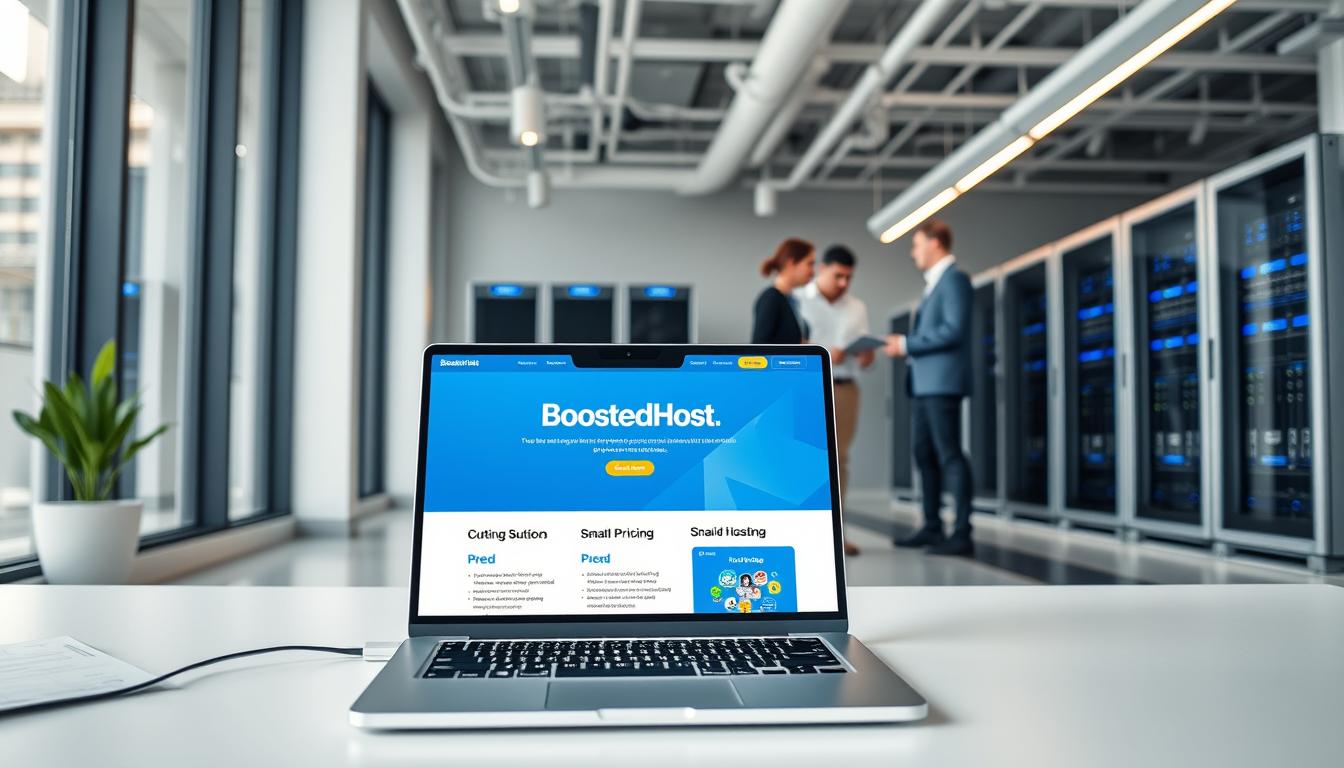We know the sleepless nights that come with launching a site on the wrong server. We’ve felt that worry—slow pages, surprise fees, and support tickets that drag on. Today we cut through the noise so you can choose a hosting plan with confidence.
In this review we compare two providers on speed, reliability, and total cost of ownership. We explain how LiteSpeed, a global CDN, and sub-200ms TTFB translate into faster page loads and better SEO. We also cover shared hosting, managed WordPress, VPS, cloud hosting, and dedicated servers—so every website need has a clear plan.
We highlight transparent pricing, free SSL certificates, daily backups, malware protection, and fast, expert support. We frame the long-standing competitor fairly—verified on WHTop in 2019—while showing where our stack and Orbit AI site builder save time and cut complexity.
Key Takeaways
- We prioritize speed and uptime—better page performance and predictable costs.
- LiteSpeed + global CDN delivers fast TTFB and improved SEO out of the box.
- Clear plan mapping: from shared hosting to dedicated servers for growth.
- Free SSL, daily backups, and malware protection reduce maintenance time.
- Orbit AI makes a professional website in minutes when time is tight.
- Transparent pricing and responsive 24/7 support cut surprise costs.
At a glance: who wins for speed, reliability, and value in 2025
We put speed, uptime, and long-term cost under the microscope to name a practical winner for 2025.
Quick verdict: one provider leads on raw performance — sub-200ms global TTFB, LiteSpeed-driven page loads, and a global CDN that reduces latency for U.S., Europe, and Asia visitors.
Reliability matters more than flashy specs. Look for a 99.99% uptime target, daily backups, and account isolation to cut restore time and risk.
- Speed: LiteSpeed stack + CDN yields faster page loads and better SEO.
- Reliability: 99.99% uptime targets with daily backups and isolation.
- Value: transparent price at checkout, free SSL certificate, and handled migrations.
- Plans: clear tiers across shared hosting, web hosting, VPS, and dedicated servers.
- Control & scale: cPanel-like control panel, SSH, Git, SSD storage, modern CPU and RAM allocations.
- Support & security: 24/7 expert support plus proactive WAF and malware protection.
Bottom line — for speed, uptime, and predictable total cost over time, we recommend the higher-performing stack for growth-focused websites and agencies. The competitor keeps a steady, established presence, but the performance gap matters when page speed and SEO are on the line.

Performance showdown: LiteSpeed servers, global CDN, and TTFB under 200ms
We test how modern server stacks and global delivery networks alter real-world page performance. Our aim is clear: keep TTFB under 200ms so pages load fast for U.S., Europe, and Asia visitors.
LiteSpeed enterprise stack vs standard server setups
LiteSpeed handles concurrent connections more efficiently than many standard web servers. That cuts server wait time and speeds the first byte.
SSD storage and optimized disk I/O reduce latency under load. Efficient caching serves cached pages without hitting PHP or the database on every request.
Real-world latency: sub-200ms global TTFB and page impact
Sub-200ms TTFB shortens overall page load time. Faster loads improve Core Web Vitals, user engagement, and conversions.
- CPU and RAM profiles tuned for PHP, Node.js, and Python make dynamic pages compile faster.
- Consistent server performance beats occasional bursts — predictable speed protects SEO and KPIs.
- Staging and control tools help deploy changes without slowing production under traffic.
Global CDN coverage for U.S., Europe, and Asia traffic
Our global CDN places cached assets closer to visitors. That reduces hops and stabilizes performance when the origin server is far away.
Action point: choose the hosting plan that matches your concurrency and workload. Match CPU, RAM, and disk profile to keep TTFB under 200ms as you grow.

Uptime and reliability: 99.99% targets, redundancy, and daily backups
High availability and fast recovery are non-negotiable for business sites—here’s how we measure them.
We set clear uptime expectations—99.99% targets— so business-critical websites face minimal interruptions. That target guides architecture, monitoring, and support windows.
Measured uptime ties to practical SLAs. We explain response and resolution windows so teams know what to expect during incidents.
Measured uptime and SLA expectations for business-critical sites
We define SLAs around response time and resolution time. Support responds in minutes for urgent issues. That reduces cumulative downtime and protects revenue.
“Clear SLAs and fast support turn outages into short incidents, not long disasters.”
Automatic backup strategy: daily restore points and disaster recovery
Daily backups provide rolling restore points. Restores are a control-panel action. That saves time after accidental deletes or malware.
- Isolation and proactive malware protection keep shared accounts from spreading threats.
- Redundant SSD storage and disk health checks reduce data-loss risk and slowdowns.
- Disaster recovery coordinates DNS and service restores to cut total downtime.
For ecommerce, test restores on staging to confirm carts and accounts work after rollback. Choose hosting plans by RPO/RTO needs—size CPU and RAM and add server redundancy where tolerance is low.
Outcome: fewer incidents, faster restores, and steadier page metrics. For straightforward web hosting, see our recommended plans web hosting and pick the plan that fits your uptime and recovery needs.
Pricing transparency and renewals: no hidden fees vs promotional gotchas
Transparent fees and predictable renewals make budgeting for web projects simple. We show exact upfront price and renewal price so your total cost over time is predictable.
What’s included: SSL certificate is bundled with most plans — no basic upsell on security. Migration costs are clear and often included, saving you time and risk during switchover.
We list common add-ons—domains, email, and backup tiers—and state what the plan already covers. That prevents bill shock at checkout.
Renewals, domain offers, and TCO
Watch for steep first-year discounts that jump at renewal. We call out those “promo gotchas” and present renewal math side-by-side.
- Domain registration and transfer fees are transparent; know when a free domain applies.
- Pick the right plan tier so you don’t pay for unused CPU or storage.
- Support and managed services reduce indirect costs by saving your team time.
“Clarity on price and renewals protects your budget and keeps your site running without surprises.”
Outcome: clear pricing, free SSL, and straightforward migrations lower total cost of ownership over 12–36 months. We give a TCO checklist so finance teams can model real spend and pick the best hosting plan.
Hosting plans compared: shared web hosting, managed WordPress, VPS, and dedicated servers
We map clear upgrade paths so your website grows without surprise migrations or long downtime.
Shared web hosting (SSD tiers) gives fast startups for single sites and small businesses. SSD storage and tuned caches deliver better page loads at a low price. Shared hosting plans include a simple control panel, email hosting options, and enough disk and space for most brochure sites.
Managed WordPress hosting adds staging environments, automatic core and plugin updates, and hands‑on speed tuning. That protects uptime and page experience while saving developer time.
VPS and cloud hosting plans
VPS hosting and cloud hosting plans let you scale CPU and RAM as traffic grows. Choose profiles with dedicated CPU cores, burstable RAM, and SSD disk layouts for database‑heavy or media‑heavy sites.
Dedicated servers and dedicated IPs
Dedicated servers offer full control and isolation. They include dedicated IP addresses and higher disk and space allocations. Use dedicated hosting for compliance, heavy traffic, or custom server stacks.
- Which plan to pick: shared hosting for small sites; managed WordPress for CMS speed and safety.
- When to upgrade: move to VPS when CPU or RAM limits hit often; pick dedicated servers for steady high traffic and isolation.
- Developer tools: SSH, Git, and a cPanel‑like control panel keep deployments safe across plans.
“A clear roadmap from starter plan to enterprise servers cuts downtime and preserves SEO gains.”
Outcome: a transparent path—SSD shared tiers → managed WordPress → VPS/cloud → dedicated servers—so you scale performance, control, and uptime with predictable price and minimal time lost to migrations.
AI advantage: Orbit Website Builder vs traditional site setup
Orbit uses AI to turn a concept into a live site in minutes, not weeks. We built the workflow so teams save time and ship fast. The goal is simple: give you a professional website without deep technical work.
Build a professional website in under 5 minutes with AI
Launch quickly. Orbit generates page structure, headings, and starter content. You review, edit, and publish. That cuts setup time and speeds your path to revenue.
Templates, SEO-ready structure, and e-commerce readiness
Conversion-minded templates include sane heading hierarchy, internal linking, and clean page markup for better SEO. E-commerce options are ready out of the box so you can add products without heavy development.
- Orbit ties directly into hosting plans—publishing, SSL, and domains in one flow.
- Teams keep editor control to refine voice while AI handles the scaffolding.
- Support stands by for first publish, DNS changes, and minor tweaks.
“A fast site builder reduces launch friction so you spend more time on content and sales.”
When custom architecture or complex integrations matter, a traditional build still makes sense. For most businesses, Orbit is the smarter path to get a working site, email integration, and live pages the same day. It also scales—move to managed WordPress or VPS as traffic grows.
Security stack: free SSL, 256-bit encryption, and malware protection
Security isn’t optional — it’s built into every plan from day one. We make HTTPS standard, so your website shows as secure without extra steps.
Safe sites save time and protect trust. We enforce modern TLS and 256-bit encryption to keep data private in transit. Certificate renewals, redirects, and installs are managed in the control panel.
Proactive defenses and quick recovery
We run continuous malware scanning and WAF rules to block common exploits before they hit your server. Account isolation limits noisy neighbors on shared hosting so your space and disk I/O stay stable.
- HTTPS by default with free SSL lowers risk and avoids upsells.
- Daily backups create clean restore points for fast recovery.
- Email protections (SPF/DKIM/DMARC) help deliverability.
- Clear support paths and fast triage reduce downtime.
| Feature | Starter plan | Business plans | Enterprise |
|---|---|---|---|
| Free SSL & HTTPS | Included | Included | Included + EV option |
| 256-bit/TLS | Modern TLS | Modern TLS | Advanced cipher suites |
| WAF & malware scanning | Basic | Proactive | Advanced + SOC review |
| Backups & restore | Daily | Daily + 14-day retention | Daily + custom RPO/RTO |
Security is baked into all hosting services, not sold as an add-on. If you want a walkthrough of certificate management or plan details, see our plans page at our plans and contact support for fast setup.
Global infrastructure: Switzerland, USA, Europe, and Asia data centers
Geography shapes speed: choosing a data center in Switzerland, the U.S., Europe, or Asia cuts travel time for requests. We place hosting close to your users so pages load fast and your website stays responsive.
Routing U.S. traffic smartly for lower latency
Smart routing and Anycast edges reduce hop count across the U.S. That keeps TTFB low and stabilizes page performance from coast to coast.
- We help you choose the right region—U.S., Europe, Asia, or Switzerland—to place servers near customers.
- Anycast and CDN edges reduce hops and stabilize latency for nationwide reach.
- For multi-geo sites, caching rules keep page speed consistent across continents.
- Consider vps in-region for compute-heavy workloads; stick with shared web hosting for simple sites.
- CPU, RAM, disk throughput, and space planning affect media-heavy sites at the edge.
- Support works 24/7 across data centers; SLA and uptime targets stay consistent.
- We guide plan selection so you avoid unnecessary price premiums while meeting SEO and user-experience goals.
“Placing content where your users are cuts latency and boosts real-world SEO.”
Control panel and developer stack: PHP, Node.js, Python, and Git workflows
A clear developer workflow reduces release risk and speeds time to market. We give teams a familiar control panel plus modern tools so deployments are predictable and fast.
cPanel-like control and staging make daily ops simple. Manage domains, databases, SSL, and email from one place. Staging environments mirror production so you test before pushing live.
SSH, Git, and runtime optimizations
SSH and Git workflows streamline deployments. CI/CD pipelines and quick rollbacks cut deployment time and human error.
We tune PHP, Node.js, and Python runtimes for web apps. That reduces CPU and RAM waste and keeps dynamic pages responsive.
WooCommerce and server-side speed
WooCommerce gets object caching, HTTP/3, and LiteSpeed cache for smooth carts and fewer checkout errors. Disk I/O and space alerts warn you before performance drops.
- Choose a plan by expected CPU threads and ram needs.
- Cron jobs, queue workers, and background processing are supported on higher tiers.
- Support helps configure caching rules, image optimization, and SEO-minded page practices.
Outcome: a developer-friendly stack with guardrails that protect uptime and keep page speed high.
Customer support: 24/7 experts who resolve most requests in minutes
When minutes matter, our team moves fast. We staff experienced engineers around the clock so your website stays online. That means real humans answer quickly and act to protect uptime.
Multiple channels, clear escalation. Use live chat for urgent issues and tickets for deeper investigations. If a problem risks downtime, we escalate immediately to senior ops until it’s resolved.
Live chat, tickets, and escalation paths that prioritize uptime
- Real people reply fast—most requests are resolved in minutes to protect hosting and servers.
- Live chat for speed, tickets for complex fixes, and clear escalation when seconds count.
- Tell us logs, screenshots, and steps to reproduce—this speeds diagnosis and reduces time to fix.
- We handle SSL installs, DNS changes, control panel tasks, and server tweaks without jargon.
- We document every fix so your team spends less time repeating troubleshooting.
Proactive communication keeps you informed during incidents. We send maintenance notices and status updates so your team can plan work around planned windows.
“Our goal: keep your website fast and available while you focus on growth.”
| Support channel | Typical response | Best for |
|---|---|---|
| Live chat | Under 2 minutes | Urgent uptime issues, quick config |
| Ticket | 15–60 minutes | Complex fixes, log-based diagnostics |
| Escalation | Immediate | Major incidents affecting multiple pages or servers |
Fair note: the competitor offers established support. Our differentiator is speed and resolution quality, mapped to hosting plans so business needs match service level and price.
E-commerce and SEO performance: speed, CDN edge, and Core Web Vitals
When checkout time matters, every millisecond shaved off TTFB and LCP converts into revenue. Faster delivery from the CDN edge and a LiteSpeed cache directly improves Core Web Vitals. That helps rankings and reduces cart abandonment.
Practical wins:
- Faster TTFB and edge delivery improve LCP and INP — key metrics for SEO and conversions.
- LiteSpeed caching, image compression, and minification cut page weight without breaking layouts.
- HTTPS by default and consistent response times build trust at checkout and reduce friction.
- SSD-first storage lowers database latency on product and cart pages.
We recommend a simple performance checklist you can apply today:
- Minify CSS/JS, enable cache rules, lazy-load images, and push assets to CDN edges.
- Use structured data and a clear sitemap to support organic visibility and rich results.
- Track metrics in analytics—bounce rate against time to interactive—to spot bottlenecks.
Managed WordPress hosting adds staging and automatic updates so plugins don’t break checkout flows. Our support reviews slow pages and suggests fixes without a full theme rewrite.
“Outcome: a faster store, higher conversions, and durable organic visibility.”
Email hosting, domains, and add-ons: domain registration, DNS, and accounts
Getting your domain, DNS, and email right saves hours of frustration at launch.
We centralize domain registration and DNS in one control place. That cuts setup time and reduces errors. Register or transfer a domain and manage DNS records from the same control panel.
Email hosting and accounts are ready in minutes. Create professional addresses, add accounts in bulk, and enable spam protection. We automate MX, SPF, DKIM, and DMARC checks so deliverability works from day one.
SSL provisioning ties into DNS automation. HTTPS is active fast once the certificate validates.
- WHOIS privacy and renewal reminders keep ownership safe.
- Bulk domain and account setups speed agency rollouts.
- Support helps with tricky DNS migrations and verification steps.
“Outcome: domains, email, and SSL working together from day one.”
| Service | Included | Notes |
|---|---|---|
| Domain registration | Yes | Transfer and WHOIS privacy options |
| Email hosting | Yes | Spam protection, bulk accounts |
| SSL automation | Yes | Fast issuance via DNS validation |
| DNS management | Yes | Control panel tools + support |
Migrations and setup: moving from Keliweb or starting from scratch
Moving your website doesn’t have to be disruptive; a staged approach keeps pages online and SEO intact.
We audit your current stack — whether on Keliweb or another provider — to map a zero‑downtime migration plan. That audit covers files, databases, email, and control panel differences.
Free site transfer, downtime avoidance, and DNS switchovers
Our team performs a free site transfer for eligible plans. We copy files, export and import databases, and migrate email—then stage the site for validation.
We validate pages, cron jobs, carts, and contact forms on the staged copy. Once you sign off, we schedule the DNS switchover to minimize cached lookups and reduce time offline.
- SSL issuance is coordinated early so HTTPS is live at launch.
- For complex vps and vps hosting moves, we run a parallel environment during off‑peak time.
- We monitor logs after cutover to catch edge cases quickly.
- Documentation and training help your team use the new control panel without friction.
Communication matters: we keep stakeholders updated at every step so teams know exactly when traffic shifts.
“Result: a predictable migration with no lost orders, preserved SEO, and support that moves fast.”
Who each provider is best for: individuals, small businesses, and agencies
Different teams have different needs: hobbyists want low price and simplicity, SMBs need room to scale, and agencies want control and fast support. We map common use cases to clear hosting recommendations so you buy the right plan at the right time.
Budget-conscious sites vs growth-focused SMBs and agencies
Individuals and bloggers: choose shared hosting for a low price and solid speed. Shared plans give quick setup, included domains, and easy upgrades when traffic grows.
SMBs with growth goals: pick managed WordPress or a small vps. That gives dedicated resources, better uptime, and staging for safe updates. SSD storage and proper disk and space planning matter for media-heavy sites.
Agencies and multi-site shops: require multi-site tools, staging, priority support, and scalable hosting plans. Dedicated hosting or dedicated servers fit data-sensitive clients and compliance needs.
- Match plan tiers to real workloads to avoid overbuying.
- Pay for capacity you use—upgrade as demand rises.
- For local Italy-centric needs, Keliweb can fit budget or regional choices.
- For U.S.-centric growth, the global CDN and broad support depth are an advantage.
“Pick the simplest plan that meets your goals today, and a clear upgrade path for tomorrow.”
Independent references and market context
Third-party records and market trackers give a clear view of a provider’s tenure and trust. We use independent listings to confirm claims and show where to check facts before buying a hosting plan.
WHTop verification and profile dates
Keliweb has a WHTop profile added on Apr 25, 2012 and last updated on Sep 30, 2020. WHTop marked it as trusted in 2019. Those dates help confirm market presence and history — not current performance.
Industry comparison resources that help validate choices
Compare providers using tools that track price, features, and updates over time. Focus on apples-to-apples items: SSL included, backups, CDN, and renewal price.
- Verify performance metrics: TTFB, uptime, and page speed under load.
- Cross-check support channels and realistic response time expectations.
- Use independent reviews alongside provider docs for a balanced view.
- Run a short pilot website to test real-world time-to-launch and support help.
- Read terms for domains, SSL, and add-ons to avoid surprise fees.
“Pick a host with transparent data and recent track records — not just polished marketing.”
| Resource | Added | Last update |
|---|---|---|
| WHTop — Keliweb | Apr 25, 2012 | Sep 30, 2020 |
| WHTop — Tophost.it | Jun 15, 2007 | Dec 23, 2024 |
| WHTop — Webhosting.it | Jun 15, 2007 | Oct 14, 2024 |
BoostedHost vs Keliweb
Quick recap: we compare speed, uptime, pricing, and features so you can pick the right hosting plan for growth-focused sites in the U.S.
Performance wins the day. The higher-performing stack pairs LiteSpeed with a global CDN to keep TTFB typically under 200ms. That translates to faster page loads, better Core Web Vitals, and improved SEO.
Reliability and recovery: 99.99% uptime targets, daily backups, and account isolation reduce restore time and limit blast radius during incidents. That matters for ecommerce and high‑traffic pages.
- Speed: LiteSpeed + global CDN + sub-200ms TTFB typically beats standard stacks.
- Pricing: transparent renewals and SSL certificate included — fewer promo surprises at checkout.
- Features: SSD storage, malware protection, staging, and daily backups standardize performance.
- Tools & control: Orbit AI accelerates launch; SSH and Git support modern workflows and deployments.
- Support: 24/7 expert help with fast resolution keeps your website online.
- Plans & scale: shared hosting for starters; vps and dedicated servers for scale; clear upgrade paths.
Fair view: the competitor is established and fits regional or price‑sensitive needs. Evaluate data center location, currency, and local support when choosing.
“For U.S.-focused growth, the higher-performing stack offers a better balance of speed, reliability, and predictable price.”
Conclusion
This final section distills our findings into a practical action plan for launching and scaling fast websites.
If speed, uptime, and predictable price matter, we recommend the higher‑performance choice for U.S. sites. LiteSpeed, CDN, and sub‑200ms TTFB protect SEO and conversions while keeping page load time low.
99.99% uptime targets, daily backups, and included SSL plus malware protection reduce downtime risk. Staging and managed options make updates safe and simple.
Next steps: pick a hosting plan, request the free migration, and launch with Orbit or managed WordPress. Choose the right plan now and scale to VPS or dedicated servers as traffic grows. Our 24/7 expert support will handle setup, migration, and ongoing optimization so you save time and stay focused on your web goals.
FAQ
What are the main differences in performance between BoostedHost and Keliweb?
Both providers offer modern stacks, but performance hinges on server tech and CDN reach. Look for LiteSpeed or similar enterprise stacks, SSD storage, and global CDN nodes. Those features lower TTFB (often under 200ms) and improve Core Web Vitals. Check CPU and RAM allocations on VPS/cloud plans for predictable performance under load.
How reliable is uptime and what SLA should we expect?
Aim for providers that publish a 99.99% SLA with transparent credit policies. Reliable hosts use redundant power, networking, and daily backups to minimize downtime. Confirm measured uptime reports and planned-maintenance windows before committing.
Do either provider include free SSL certificates and 256-bit encryption?
Most reputable hosts include free Let’s Encrypt SSL and enforce HTTPS by default. Look for servers and connections that use strong TLS (equivalent to 256-bit encryption strength in cipher suites) plus automated renewals to avoid certificate expiry.
What hosting plans are available and which fits my site—shared, WordPress, VPS, or dedicated?
Providers typically offer shared web hosting for basic sites, managed WordPress for optimized CMS performance, cloud VPS for scaling apps, and dedicated servers for enterprise control. Choose based on traffic, CPU/RAM needs, storage (SSD), and whether you need a dedicated IP or advanced control panel features.
How do cloud hosting plans and VPS profiles compare on scaling and pricing?
Cloud plans usually offer flexible scaling with pay-as-you-grow CPU and RAM tiers. VPS plans list fixed CPU cores and RAM; pick one that matches peak load. Compare disk type (NVMe/SSD), bandwidth, snapshot/backups, and hourly vs monthly billing to understand total cost of ownership.
Are migrations free and how do providers avoid downtime during DNS switchovers?
Many hosts include free site transfer services. Good migrations use temporary hosts or IP-based testing, sync files and databases, and coordinate DNS TTL reduction before the final switchover to avoid downtime. Confirm the scope—number of sites, databases, and email accounts included.
What control panel and developer tools are available for advanced workflows?
Look for cPanel-like dashboards, staging environments, SSH access, Git deployment, and support for PHP, Node.js, and Python. These tools speed development, enable rollbacks, and support server-side optimizations for dynamic apps and WooCommerce stores.
How is WordPress hosting different—does managed WP include staging and automatic updates?
Managed WordPress plans usually add staging sites, automated core/plugin/theme updates, and caching tuned for WP. Those features save time and reduce security risk. Verify backup frequency, restore points, and whether staging is one-click.
What security features should we expect—malware scanning, WAF, and isolation?
Essential security includes proactive malware scanning, a Web Application Firewall (WAF), account isolation on shared plans, and scheduled backups. Bonus features: DDoS protection, two-factor authentication, and regular security audits or hardening policies.
How do CDN coverage and data center locations affect latency for U.S., Europe, and Asia traffic?
CDN edge nodes near your users reduce latency and speed content delivery. Choose providers with data centers or CDN PoPs in target regions—U.S., Europe, and Asia—to keep TTFB low and improve user experience globally.
What support channels are available and how fast can we expect resolution?
Prefer hosts that offer 24/7 live chat, ticketing, and phone escalation. Many resolve common issues within minutes via chat; complex cases use tiered escalation. Check average response times and knowledge base quality before buying.
Do hosting plans include email hosting and domain registration?
Many plans bundle basic email hosting and offer domain registration and DNS management. Confirm mailbox quotas, spam filtering, and whether the domain is free for the first year. For heavy email use, consider dedicated email services or higher-tier plans.
What are renewal policies and hidden fees we should watch out for?
Promotional pricing often applies to the first term only. Verify renewal rates for hosting, SSL add-ons, backups, and migrations. Check bandwidth, account limits, and paid extras like priority support or dedicated IPs to avoid surprise costs.
Are dedicated servers and dedicated IPs necessary for ecommerce and PCI compliance?
Dedicated servers and IPs offer isolation and performance benefits. For PCI compliance, you also need proper server hardening, SSL, secure payment gateways, and periodic scans. Many small merchants meet PCI rules on managed hosting with the right controls.
How do built-in website builders and AI tools compare to traditional site setups?
AI builders can create a professional site in minutes with templates and SEO-ready structure—great for fast launches and small stores. Traditional setups offer deeper customization and developer control. Choose based on speed-to-market versus long-term extensibility.
What backup policies should we expect—daily restore points and disaster recovery?
Daily automated backups with multiple restore points are standard for business sites. Confirm retention length, on-demand snapshots, and offsite disaster recovery options. Automated backups reduce recovery time after data loss.
How do providers support SEO and Core Web Vitals improvements?
Hosting impacts page speed via server response times, CDN, and caching. Providers that optimize for low TTFB, edge caching, and compressed assets help Core Web Vitals. Also look for image optimization, Brotli/Gzip compression, and HTTP/2 or HTTP/3 support.
Where can we find independent references and industry verification about providers?
Use industry resources like WHTop, independent performance benchmarks, and user reviews on multiple platforms. Cross-check published uptime stats, data center certifications, and historical profiles for an unbiased view.
Which provider is best for budget sites, and which suits growth-focused SMBs or agencies?
Budget sites benefit from low-cost shared hosting with SSD and basic support. Growth-focused SMBs and agencies need managed WordPress, scalable cloud VPS, dedicated servers, and advanced support—plus features like staging, backups, and dedicated IPs for performance and control.




